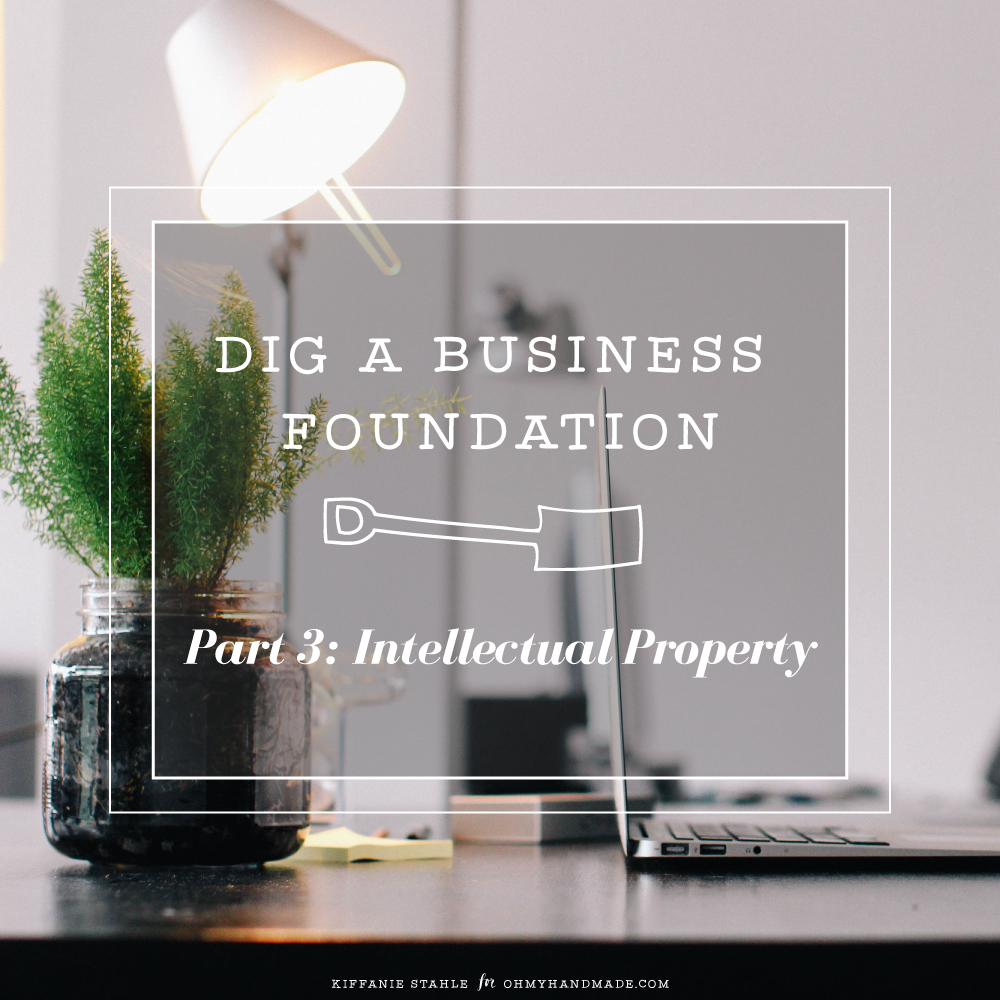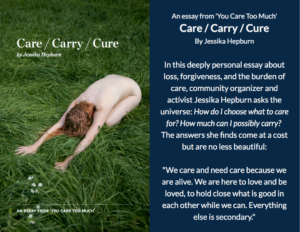

Also in this series: {Part 1: Website} | {Part 2: Contracts} | {Part 3: Structure}
First off, I’m super proud of you for tackling each of the areas so far. We are going to wrap up with how you bring home the bacon: your business’ intellectual property.
For the vast majority of creative businesses, your intellectual property is your most valuable business asset. It’s how you get paid and the reason people love your brand. Because of this, creative businesses should have a process to regularly identify any copyrights or trademarks that have been created and to assess if registering them is in the best interest of the business, and if so, to complete the registration. Plus, once you’ve identified these valuable assets, you can start thinking about ways to monetize them via licensing, digital products, or service packages.
So what kinds of creations do copyright and trademark laws cover?
Copyrights
Copyright protects “works of authorship in a tangible form”. The tangible form part is easy, it just has to be memorialized in something that you can hold, view, or perceive (even if only for a few moments). The works of authorship part can be a little trickier.
I often like to back into it, by explaining some of the things that are not protected by copyright. As you’ll see there are times where parts of a piece do have copyright protection, while other parts do not.
- Titles. Titles, names, short phrases, and slogans are excluded from copyright protection. So I could make a photograph called Necessary Silence and you could publish a book under that same name and neither of us could stop the other. However both my photograph and your book would have copyright protection, just not the title.
- Factual Information. Another category not receiving copyright protection is works containing only commonly available information (think calendars, lists, or tables) and facts. Calendars are a great example of this; the 7×4 grid representing the month of June does not have copyright protection (because it’s a table). However, the calligraphy lettering and illustration that you pair with that grid would be protected by copyright.
- Ideas. How you carry out your idea is what’s protected, not the underlying idea. For example, you can’t stop someone else from drawing animals riding bicycles. What you can prevent is someone tracing your illustrations, downloading them off your website and printing them, or buying a print from you and making copies of it.
- Functional Items. The final area that trips up some creatives is that copyright does not protect objects that have a primarily utilitarian function. Common examples of this are clothing, accessories, and furniture. Once again, portions of the design could have copyright protection. For example, the elements required for a chair to work wouldn’t get protection (the back, seat, and legs). But if I carve an intricate pattern in the back of the chair, that design could gain copyright protection.
Trademarks
Like many of the laws we’ve covered in this series, trademarks are actually centered on consumer protection. This set of laws grants brand owners the exclusive right to use a word, phrase, or logo as a brand identifier. So that when consumers see that brand identifier they know exactly who is providing them the product or service.
For example, when we go under the golden arches into a McDonald’s and order a Big Mac we know that McDonalds Corporation is providing that service and selling us that product, not some random mom and pop burger stand.
Because of this, if you want to register a trademark there are a couple important rules to consider when adopting your brand identifier.
Cannot be generic or descriptive. Since you will be the one and only business allowed to use this identifier, you cannot be granted a trademark for a generic term (e.g. earrings) or something that only describes the products or services you are selling (e.g. design studio). However, this doesn’t mean that you can’t use a generic or descriptive term if it doesn’t apply to your products or services. Apple is a great example, apples are a generic term when applied to food; but we never associated apples with computers until Apple made that association for us.
First to plant the flag. The second rule is that trademark laws are playground rules. The first one to plant the flag gets the trademark, as long as they keep using it. So if I adopted and registered a trademark here in the United States in 2010, I could stop anyone from using that trademark that wanted to use it in the United States after me. But if I found out later that a small mom & pop had been using it since 1965, I wouldn’t be able to stop them. This also brings up the concept that trademarks are registered in individual countries, so just having a trademark here in the U.S. doesn’t prevent someone in Canada from adopting the same mark.
Cannot be confused with existing trademark. Finally, we have to check that your trademark cannot be confused with an existing trademark. For example, I wouldn’t be able to get a trademark for a clothing store called Anthro, because the trademark would easily be confused with Anthropologie. However, having a trademark doesn’t protect you for every product or service in the entire marketplace (think Delta – am I talking about water faucets, airlines, or dental insurance?). We only have to check for confusingly similar trademarks for related products or services. So if I wanted to open a gallery called Anthro, I’d probably be safe.
Print out this worksheet by clicking here or on the image above and sit down with your favorite beverage. At this point I’m thinking you probably deserve a glass of wine.
As you work through the worksheet think about all the items you have created in 2014 that could be copyrighted or trademarked. Once you’ve got a list, then place a star next to anything that you’ve already protected with a registered copyright or trademark. If something is not starred and is critical to cash flow, then put that at the top of the list to register.
After you’ve done that, spend some time daydreaming about ways that you could create cash flow from some of these items: should you approach a new licensing agent, create digital products, design an e-course to teach your system to other business coaches?
Congrats! You’ve now reinforced four critical areas of your business foundation. If you didn’t drink a glass of wine before (or even if you did), reward yourself with one now.
I’d love to know in the comments below your biggest aha! moment from this series and what aspect of your business foundation needed the most TLC.
Kiffanie Stahle | The artist’s JD
 Kiffanie Stahle is a lawyer, photographer, and small business owner. In April 2014, she created the artist’s JD, a place where creative business owners can get the tools and resources they need to tackle the legal aspects of their businesses. Kiffanie believes that the law doesn’t have to be scary or hard to understand. And she knows this to be true because she’s been practicing law since 2011. When Kiffanie is not creating art or running her business, you might find her concocting something in the kitchen, soaking up the sun, or plotting her next adventure.
Kiffanie Stahle is a lawyer, photographer, and small business owner. In April 2014, she created the artist’s JD, a place where creative business owners can get the tools and resources they need to tackle the legal aspects of their businesses. Kiffanie believes that the law doesn’t have to be scary or hard to understand. And she knows this to be true because she’s been practicing law since 2011. When Kiffanie is not creating art or running her business, you might find her concocting something in the kitchen, soaking up the sun, or plotting her next adventure.
WEBSITE | FACEBOOK | TWITTER | INSTAGRAM
This is final post in a 4 part series publishing every Thursday in January to help you dig a solid foundation for your business in 2015! Join us today for a special Q & A#OMHG chat with Kiffanie on Twitter, January 29th from 1-2pm EST.
Also in this series: {Part 1: Website} | {Part 2: Contracts} | {Part 3: Structure}



[…] Read More Here! […]